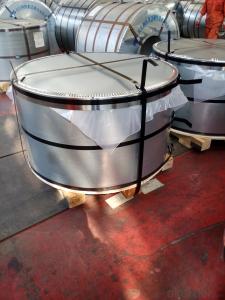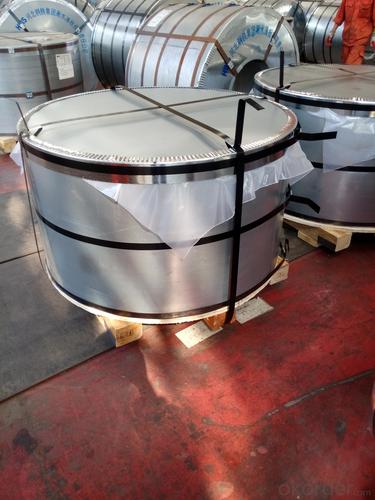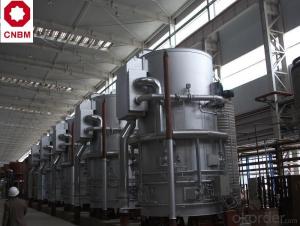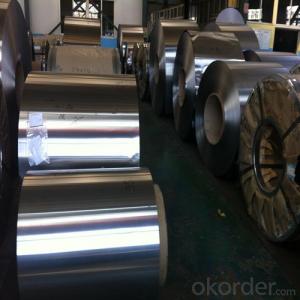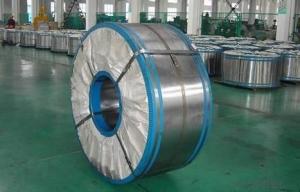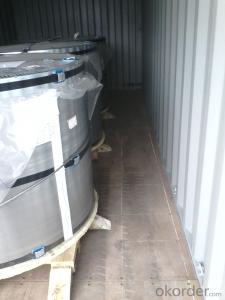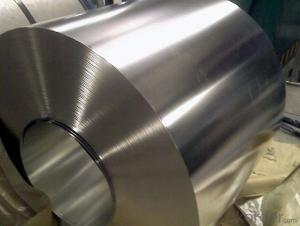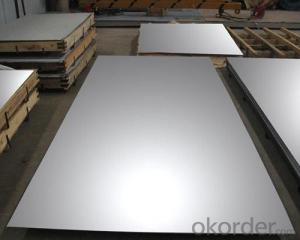Electrolytic Tinplate Sheets for Useage of Paint Package
- Loading Port:
- Tianjin
- Payment Terms:
- TT OR LC
- Min Order Qty:
- 50 m.t.
- Supply Capability:
- 30000 m.t./month
OKorder Service Pledge
OKorder Financial Service
You Might Also Like
Specification
1.Structure of Electrolytic Tinplate Sheets for Useage of Paint Package Description
Electrolytic Tinplate undoubtedly enjoys the pride of place as a packaging medium especially for food. It owes its unique position to its "nine layer sandwich structure", each of which contributes to its eminence as a packing material. The steel base of electrolytic tinplate provides the necessary strength and
formability for can fabrication. The tin-iron alloy layer provides the bond between the steel and free tin layer. The free tin layer is not only responsible for the attractive bright finish and ease of solderability but is also non-toxic- a factor of vital importance in food packaging!
2.Main Features of the Electrolytic Tinplate Sheets for Useage of Paint Package
Appearance – Tinplate is characterized by its beautiful metallic luster. Products with various kinds of surface roughness are produced by selecting
the surface finish of the substrate steel sheet.
Paintability and printability – Tinplates have excellent paintability and printability. Printing is beautifully finished using various lacquers and inks.
Formability and strength – Tinplates have got very good formability and strength. By selecting a proper temper grade, appropriate formability is
obtained for different applications as well as the required strength after forming.
Corrosion resistance – Tinplate has got good corrosion resistance. By selecting a proper coating weight, appropriate corrosion resistance is
obtained against container contents. Coated items should meet 24 hour 5 % salt spray requirement.
Solderability and weldability – Tinplates can be joined both by soldering or welding. These properties of tinplate are used for making various types
of cans.
Hygienic – Tin coating provides good and non toxic barrier properties to protect food products from impurities, bacteria, moisture, light and
odours.
Safe – Tinplate being low weight and high strength makes food cans easy to ship and transport.
Eco friendly – Tinplate offers 100 % recyclability.
Tin is not good for low temperature applications since it changes structure and loses adhesion when exposed to temperatures below – 40 deg C.
3.Electrolytic Tinplate Sheets for Useage of Paint Package Images
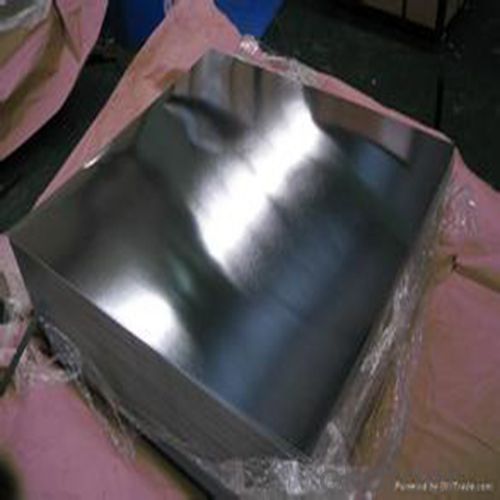
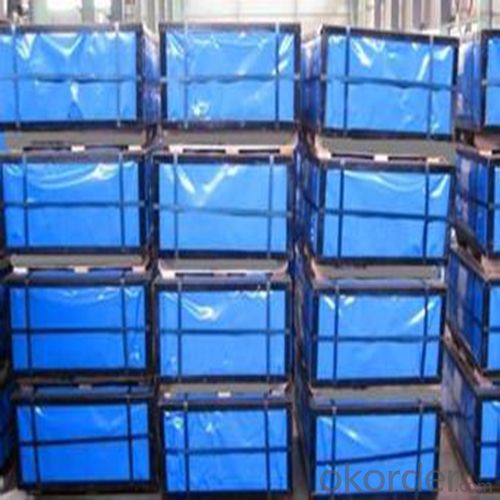
4.Electrolytic Tinplate Sheets for Useage of Paint Package Specification
Specification of :
Standard: ISO 11949 -1995, GB/T2520-2000,JIS G3303,ASTM A623, BS EN 10202
Material: MR,SPCC
Thickness:0.15mm - 0.50mm
Width: 600mm -1150mm
Temper: T1-T5
Annealing: BA & CA
Coil Inner Diameter: 508mm
Weight: 6-10 tons/coil 1~1.7 tons/sheets bundle
Passivation:311
Oil: DOS
Surface: Finish,bright,stone,matte,silver
5.FAQ of Electrolytic Tinplate Sheets for Useage of Paint Package
- What is tinning and how does it work?
Tinning is the process of thinly coating sheets of wrought iron or steel with tin, and the resulting product is known as tinplate. It is most often used to prevent rust.
- Do you only have prime quality tinplate?
We can supply both prime and second quality tinplate.
- Q: How is tinplate coated for electrical enclosures?
- Tinplate is commonly coated for electrical enclosures through an electroplating process, where a thin layer of tin is deposited onto the surface of the base metal. This electroplating process helps to enhance the corrosion resistance and conductivity of the tinplate, making it suitable for use in electrical enclosures.
- Q: What are the main applications of tinplate in the gardening industry?
- Tinplate is commonly used in the gardening industry for various applications such as plant pots, seed trays, watering cans, and garden tools. The use of tinplate ensures durability, corrosion resistance, and ease of maintenance, making it an ideal choice for these gardening essentials. Additionally, tinplate can also be utilized for packaging purposes, such as cans for storing fertilizers, pesticides, and other gardening products.
- Q: How does tinplate affect the taste and quality of food?
- Tinplate, which is a thin sheet of steel coated with a layer of tin, is commonly used in food packaging. It has minimal impact on the taste and quality of food due to the inert nature of tin. This means that tin does not react with the food or alter its flavor. Additionally, tinplate provides a protective barrier against external factors such as light, oxygen, and moisture, thereby preserving the freshness and quality of the food inside the packaging.
- Q: Can tinplate be used for storage containers?
- Yes, tinplate can be used for storage containers. Tinplate is a type of steel coated with a thin layer of tin, which provides it with corrosion resistance and durability. This makes it suitable for storing a wide range of products, including food, beverages, chemicals, and cosmetics. Tinplate containers are commonly used in the packaging industry for their ability to maintain the quality and freshness of the stored items.
- Q: What are the main applications of tinplate in the chemical industry?
- Tinplate is widely used in the chemical industry for various applications such as packaging, storage, and transportation of chemicals. Its corrosion resistance properties make it an ideal choice for containers, cans, and drums used to store chemicals. Tinplate also provides a barrier against moisture and oxygen, which helps in preserving the quality and integrity of chemical products. Additionally, tinplate is used for the production of aerosol cans, chemical spray bottles, and other packaging solutions, ensuring safe and efficient handling of chemicals in the industry.
- Q: What are the different ways to seal tinplate containers?
- There are several ways to seal tinplate containers. Some common methods include using adhesive seals, heat sealing, crimping, or soldering. Adhesive seals involve applying a layer of adhesive to the container's lid, which is then pressed onto the container to create a secure seal. Heat sealing utilizes heat to melt a layer of plastic or wax on the lid, creating a tight bond when cooled. Crimping involves folding and pressing the edges of the container and lid together to create a tight seal. Soldering, on the other hand, uses a heated soldering iron to melt solder onto the seams of the container, creating a strong and permanent seal.
- Q: How does tinplate contribute to the performance of ammunition?
- Tinplate contributes to the performance of ammunition by providing a protective coating that prevents corrosion and oxidation of the metal components, ensuring the ammunition remains reliable and functional. The tin coating also reduces friction and assists in smooth feeding and extraction, enhancing the overall performance and reliability of the ammunition in firearms.
- Q: How does tinplate packaging contribute to food safety?
- Tinplate packaging contributes to food safety by providing a protective barrier that prevents contamination from external factors such as air, light, moisture, and microorganisms. It is resistant to corrosion and does not react with the food, ensuring the integrity and quality of the product. Additionally, tinplate packaging is tamper-proof, ensuring that the food remains safe until it reaches the consumer.
- Q: Can tinplate be formed into different shapes and sizes?
- Yes, tinplate can be formed into different shapes and sizes. It is a versatile material that can be easily molded and manipulated according to specific requirements.
- Q: What are the common surface coatings for tinplate?
- The common surface coatings for tinplate include lacquer, enamel, organic coatings, and tin-free steel coatings.
Send your message to us
Electrolytic Tinplate Sheets for Useage of Paint Package
- Loading Port:
- Tianjin
- Payment Terms:
- TT OR LC
- Min Order Qty:
- 50 m.t.
- Supply Capability:
- 30000 m.t./month
OKorder Service Pledge
OKorder Financial Service
Similar products
Hot products
Hot Searches
Related keywords
